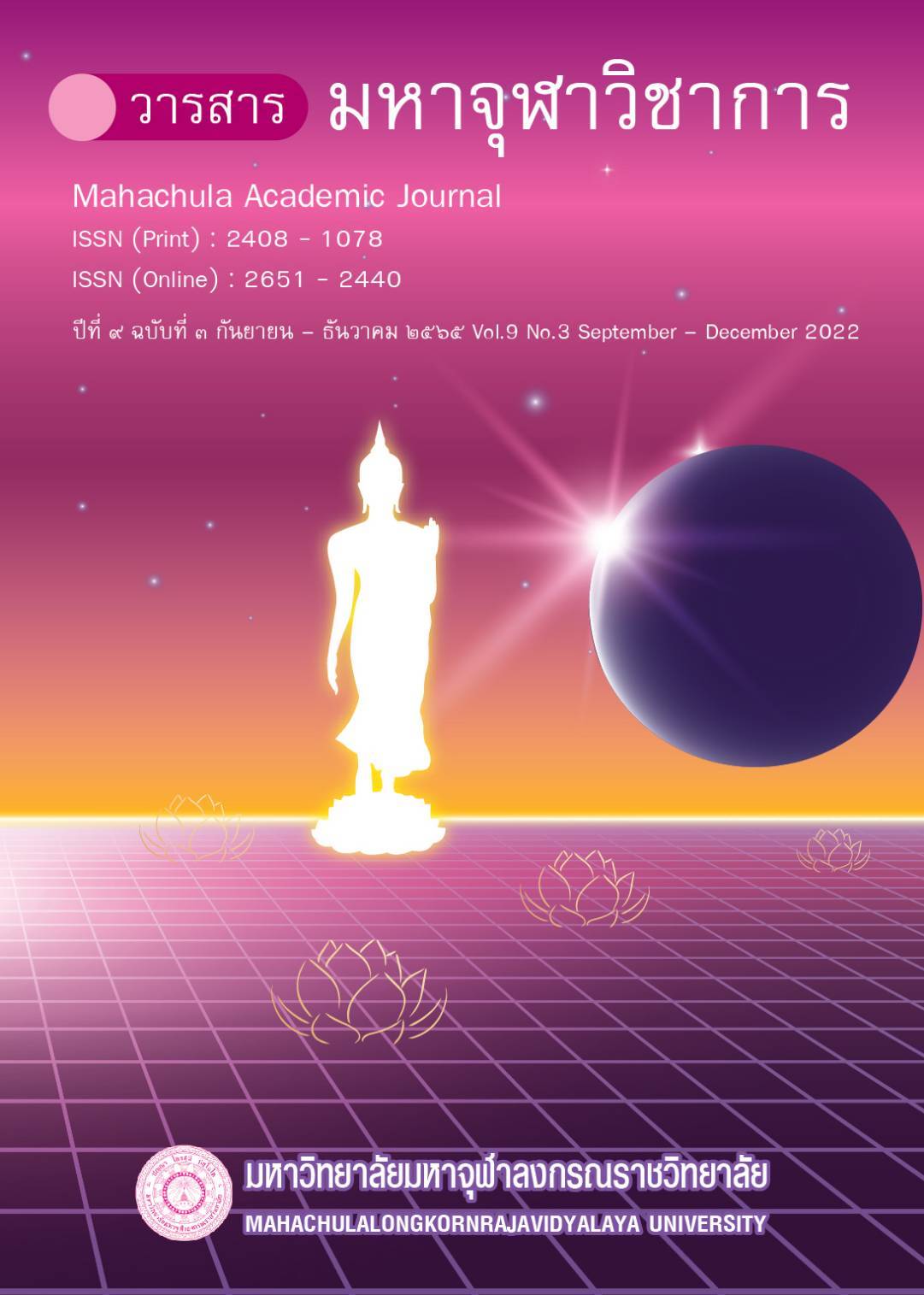A Buddhist Integrated Model for Instilling the Disciplinary Desirable Attribute into High School Students of Banharnjamsaiwittaya 1 School
Main Article Content
Abstract
In this research, the objective was purposely made to propose A Buddhist Integrated Model for Instilling the Disciplinary Desirable Attributes into High School Students of Banharnjamsaiwittaya 1 School. This research employed the qualitative research methodology done by studying documents and field research where interview of eighteen expertise, two of Buddhist scholars, one of school administrators, three teachers of high school, three parents of high school students from Banharnjamsaiwittaya 1 School, and nine of high school students. In the research, it was found that (1) the instillation of the disciplinary desirable attributes becomes so essential because having the good discipline is obviously regarded as the basis for successfulness and happiness in a society. (2) the principles of Buddha dhamma being suitable for the instillation of the discipline desirable attributes are concerned, there appear two types of virtue: ten of wholesome courses of action and six directions. Both are ideally held as the suitable virtues whereby the discipline desirable attributes can be implanted. (3) “KANYAPAT MODEL” this was proposed by a researcher as the Buddhist integrated model for instilling the discipline desirable attributes into students in the secondary school level, Banharnjamsaiwittaya 1 School where in it could be held as follows: 1) the instillation of the disciplinary desirable attributes: characteristics desired to occur with students. There are punctual, responsible, and non-infringement of the rights of others. 2) Theory of Mower contained two explanations: first, raising children from birth until they grow up and second giving the true love to the children. Both of them it can convey by acting and speaking. 3) the principles of Buddha dhamma being suitable for the instillation of the discipline desirable attributes are concerned ten of wholesome courses of action: good thinking, good making and good speaking and six directions; maintain of Family, maintain of education, maintain of religion and maintain of true friends.
Article Details

This work is licensed under a Creative Commons Attribution-NonCommercial-NoDerivatives 4.0 International License.
References
พระพรหมคุณาภรณ์ (ป. อ. ปยุตฺโต). พุทธธรรม ฉบับปรับขยาย. พิมพ์ครั้งที่ ๔๓. กรุงเทพมหานคร: สำนักพิมพ์ผลิธัมม์, ๒๕๕๘.
พระราชดำรัสพระราชทานแก่นักศึกษามหาวิทยาลัยศรีนครินทรวิโรฒ วิทยาเขตภาคใต้ จังหวัดสงขลา ณ มหาวิทยาลัยศรีนครินทรวิโรฒ จังหวัดสงขลา ๑๐ กันยายน ๒๕๒๔.
พระอธิการประมวล อธิปญฺโญ (จันทรประทักษ์) และคณะ. “หลักกุศลกรรมบถ ๑๐ กับการพัฒนาทรัพยากรมนุษย์”. วารสารบัณฑิตศึกษามหาจุฬา. ปีที่ ๗ ฉบับที่ ๓ (กรกฎาคม - กันยายน ๒๕๖๓): ๔๓.
รัชชัย ขยันทำ. “พุทธจริยศาสตร์ : พันธสัญญาที่บุคคลพึงกระทำต่อกันในทิศ ๖”. วารสารปรัชญาปริทรรศน์. ปีที่ ๒๓ ฉบับที่ ๑ (มกราคม - มิถุนายน ๒๕๖๓): ๖๙.
สมภาร พรมทา. พุทธศาสตร์กับปัญหาจริยศาสตร์. กรุงเทพมหานคร: โรงพิมพ์มหาลงกรณราชวิทยาลัย, ๒๕๕๑.
สำนักงานคณะกรรมการการศึกษาขั้นพื้นฐาน. หลักสูตรแกนกลางการศึกษาขั้นพื้นฐาน พุทธศักราช ๒๕๕๑. กรุงเทพมหานคร: โรงพิมพ์ชุมนุมสหกรณ์การเกษตรแห่งประเทศไทย, ๒๕๕๑.
สำนักงานคณะกรรมการพัฒนาเศรษฐกิจและสังคมแห่งชาติ. แผนพัฒนาเศรษฐกิจและ สังคมแห่งชาติฉบับ ๑๒ พ.ศ. ๒๕๖๐-๒๕๖๔. กรุงเทพมหานคร: สำนักงานคณะกรรมการพัฒนา เศรษฐกิจและสังคมแห่งชาติ, ๒๕๖๐.
สุนีย์ ภู่พันธ์. แนวคิดพื้นฐานการสร้างและการพัฒนาหลักสูตร. เชียงใหม่: โรงพิมพ์แสงศิลป์, ๒๕๔๖.


